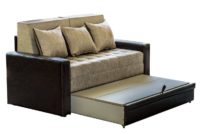Are you on a mission to get the best sleep of your life? If so, you’ll need to think about not only the mattress you choose but also the best foundation for the mattress.
There are three main types of support for mattresses: platform beds, box springs, and foundations. Any of these can work well and make a great base for your mattress. The question isn’t which type is the best, but which one will work best for your specific needs.
To save you some time, we’re going to go into some detail about each type of support for your mattress. When you’re done reading, you’ll feel ready to put together the bed of your dreams.
Box Springs
Box springs are a type of bed foundation with a wooden frame that helps evenly distribute the weight of the mattress and sleeper. A box spring will typically have a grid or a number of wire coils that act as a support system with a layer of fabric over the top.
The fabric helps to repel dust and keeps the mattress on the box spring in its proper position. People use box springs for additional support and to sleep higher up, where the air is warmer.
Best Type of Mattress for a Box Spring
If you already know you’ll be using a box spring with your mattress, you may want to purchase a double-sided innerspring bed. When these two items are used together, the box spring coils can move with the mattress coils, helping to evenly distribute your body weight. A hybrid mattress will also work well with a box spring, as it uses both coils and foam, or an ordinary innerspring bed can work.
While it is possible to use a box spring with a latex or memory foam mattress, the mattress weight might cause some premature sagging. Since other bed materials, like latex and memory foam, are typically softer, the coils in a box spring can interfere with how they’re designed to support the body.
Box Spring Pros and Cons
Box springs are good for people who need some extra height and support and should work with all body types, though larger box springs are heavy and hard to move. Some sleepers might find them too firm and want to choose a different type of support for their mattress.
Although box springs aren’t quite as popular these days, they tend to be fairly expensive. Of course, the higher quality you opt for, the more you’ll pay.
Tips for Using a Box Spring
A box spring is as important as the mattress you use, but using it properly also matters for getting an optimal sleeping experience. Here are some tips you should observe when you get a box spring:
- Buy a New Mattress and Box Spring: You shouldn’t put an old mattress on a new box spring or a new mattress on an old box spring if you want the two pieces to work their best together. You’ll be better off buying a new mattress and a new box spring to get the best sleep possible.
- Be Familiar with the Warranty: Before you buy your new box spring, get familiar with the warranty that comes with it. This will help you in case any issues come up or you decide it’s not right for you and you want to return it.
- Use Complementary Brands: If you’re shopping for a new mattress and already know you want to use a box spring with it, it makes the most sense to buy the box spring that the mattress brand sells, where applicable. If you need to use two separate brands, ask customer service about compatibility and whether that will affect the warranty on your mattress or box spring.
- Dust Protection: If you’re sensitive to allergies or just want to prevent bacteria from making a home in your bed, you may want to use a hypoallergenic box spring cover.
Platform Beds
A platform bed is a low support frame that usually uses wooden slats to support the mattress, although some have a solid panel. Platform beds often come with a headboard, footboard, or both, but some have neither.
While traditional beds require a box spring or foundation to support the mattress, the platform bed has the benefit of being ready to use on its own. This makes them an economical choice for people looking to save some money.
How do Slats Work?
Slats are (usually wooden) planks that help keep your mattress evenly supported. They lay across the frame and prevent the mattress from moving or sagging and offer enough flexibility to prevent your bed from feeling too stiff or firm.
Best Type of Mattress for a Platform Bed
You can use any type of mattress on a platform bed, which is another benefit to this type of frame. If you want to use memory foam, latex, or another bed with soft materials on a platform bed, the spacing should only be three inches between each slat.
Since latex or foam beds don’t have the firm support of coils at their core, slats spaced too far apart can lead to uncomfortable sagging. This much sagging can also shorten the lifespan of your mattress.
Platform Bed Pros and Cons
Since platform beds usually come with slats spaced apart to support the mattress, this design promotes airflow and helps keep the mattress cooler. It’s very important to use them properly, though, or they may shift and cause issues with your mattress or spinal alignment.
Platform beds tend to be cost-effective since there is a wide range of options available in every price range. If you end up using your platform bed and slats with a heavy mattress, particularly if you are a larger couple, make sure the frame is strong enough to support it. When in doubt, ask the manufacturer of the mattress or platform bed.
Tips for Using a Platform Bed
Platform beds often come with storage room underneath, which people who live in smaller apartments will likely appreciate. Here are some other considerations to make before you choose this type of frame:
- Know the Warranty: When you buy a mattress, look closely at the recommended usage for slats and materials to use with it. Using something other than what they recommend could end up voiding your mattress warranty.
- Choosing Solid Materials: As previously mentioned, there are platforms available in all price ranges, but cheaper isn’t always better. Although inexpensive particle board might be an attractive option, a frame made of solid wood will be better and last longer. Proper underlying support is crucial for spinal health and sleep quality, so don’t be afraid to make an investment.
- Bed Height: Platform beds often have a lower profile than other types of beds. If it’s important for you to have a higher bed, you may want to invest in a thicker mattress. Just make sure you’re aware of the ideal height for the platform bed you choose.
Foundations
A foundation is similar to a platform bed in that it uses a frame with slats. However, a foundation looks more similar to a box spring since it’s covered with fabric. While a box spring has coils to help absorb shock and improve your mattress flexibility, a foundation will work to just offer support to your mattress.
This type of frame is gaining in popularity because innerspring beds are becoming less common. Now, memory foam or latex beds, which require a different type of support better supplied by a foundation, are all the rage. A foundation may be suitable for someone who has a very heavy mattress and needs the right frame to support it.
Best Type of Mattress for a Foundation
Foundations work well with latex or memory foam beds because they provide these softer materials with a firm, sturdy surface, though you can use them with any type of mattress. Usually, foundations are between 7 and 9 inches in height, though lower profiles are also available.
Note that whether or not an innerspring mattress will work optimally with a foundation depends heavily on the specific manufacturer of both, so be sure to consult them before making your choice.
Foundation Pros and Cons
A foundation provides sturdier support than a platform bed and works with memory foam and latex beds. Since foundations don’t absorb shock as well as other bed frame types, the lifespan of your mattress may not be as long. However, you can typically use a foundation with any type of mattress.
Depending on the type of foundation you use, it could be quieter than a box spring since there are no coils, which can be noisy. Ultimately, whether a foundation will be the best bed frame for you depends heavily on your preferences and the mattress you end up using.
Tips for Using a Foundation
Foundations have a rigid structure that provides good support with most any type of mattress, but if you have a question about a particular bed, be sure to ask the manufacturer. Here are some other things to think about before investing in a foundation for your mattress:
- Bed Height: Think about the ideal height for your bed. People with arthritis or chronic pain issues may want a taller bed that requires less bending when getting into or out of it. Foundations are often fairly tall, so if height is a major concern, this is another benefit to this frame type.
- Mattress Compatibility: For the best results, you should try to use a mattress and foundation that come together, or at least come from the same brand. Compatibility is important not only for comfort but also for warranty purposes, in case something goes wrong.
- The distance between Slats: Using your foundation with a dense material like memory foam or latex means you should choose slats that are spaced the appropriate distance apart. Memory foam should be used with slats no more than three inches apart, whereas latex should be used with smaller gaps, such as two inches. These small distances between the slats will ensure proper support and airflow.
Final Thoughts
In summary, box spring frames are best for innerspring mattresses, while platform beds and foundations can be used with any mattress type. Just keep in mind that memory foam or latex mattresses usually aren’t very compatible with box springs but that there may be some exceptions.





